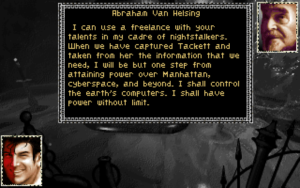IFComp 2019: Turandot
Turandot, by Victor Gijsbers, is a romance flavored with peril, only very slightly connected to the opera of the same name: it tosses the exoticizing orientalism out the window and expands the princess Turnadot’s test for her suitors from a mere three riddles to a full-on dungeon with pitfalls, traps, and a ravenous crocodile. The protagonist, Calaf, is a self-centered hedonistic playboy who sneaks into the princess’s garden on a dare, and, on seeing her, is immediately smitten with an irrational operatic love that persists even when he finds out that she’s the sort of sadist who would build such a dungeon in the first place. The bulk of the piece is spent in that dungeon, where Turandot essentially plays GLaDOS, following your progress from various balconies and observation posts and bantering with increasing familiarity as you go. Most of the interactivity here is dialogue; actions like dodging traps and wrestling the crocodile are peppered throughout, there being no particular reason to separate dialogue from action in a choice-based work.
There’s something very comfortable about the texture. By which I mean, the amount information you get before making your choices, and the amount of text between them, seems just right to me. This has definitely not been the case for every Choicescript work I’ve encountered, and when they err, they tend to err on the side of giving you too much to comfortably process at a time. One way Turnadot avoids this is by just throwing in fake, inconsequential choices once in a while to break things up into manageable pieces. In other games, I’ve sometimes found this annoying, smacking of dishonesty. But here, it’s generally clear what’s going to have real effects and what isn’t, and the author frequently uses these points as what Emily Short has called “reflective choices”, where you’re choosing the contents of your character rather than the progress of the plot. Figuring out what it means to be in love with someone who’s trying to kill you.
Because that’s really what this work is about: a character being forced into confrontation with himself. Two characters, really, including the deadly princess. The dungeon is a metaphor for the terrifying work of self-knowledge, and of being known by someone else. That goes for the princess as well — the whole thing is basically a huge, externalized defense mechanism to keep people from getting too close. At the same time, she has the power to make things easier or harder for her prisoners; ultimately, the real reason all her previous suitors failed the challenge is that they annoyed her. She’s almost a vigilante, really, avenging the sins of male privilege, of all the princes and potentates who dared to try to claim her, treating their desire as more important than her will to self-determination. Most of all, her experiences have made her detest powerlessness, and so her tests cull out both those who will try to take away her power, and those who will allow her to take away theirs.
Even at the story’s most serious moments, when Turandot and Calaf discuss their guiltier secrets, the tone is fairly playful. And this works into the choices as well — there’s some formal experimentation that reminds me of the old Lucasarts games. On several occasions, you’re given a set of choices with the sole sensible choice grayed out, clearly indicating that Calaf knows it’s an option but is determined not to do it. The ending indulges in this so hard, it feels like he’s trolling the player.
 Comments(1)
Comments(1)